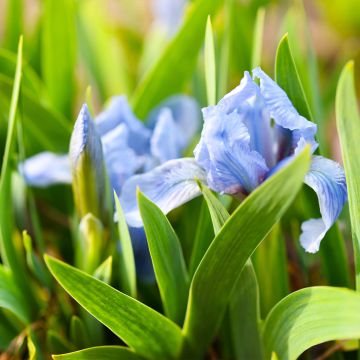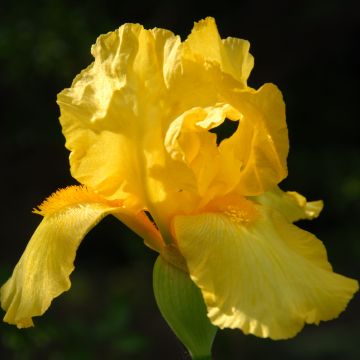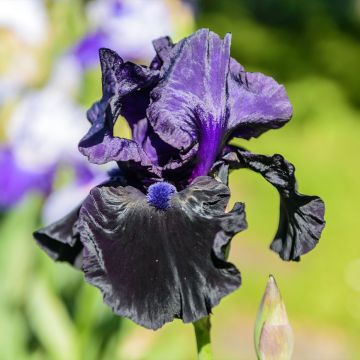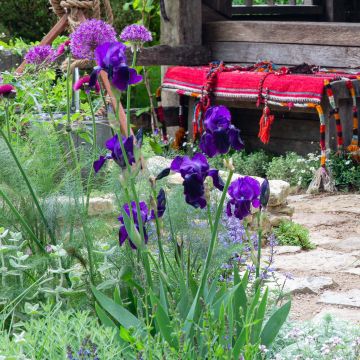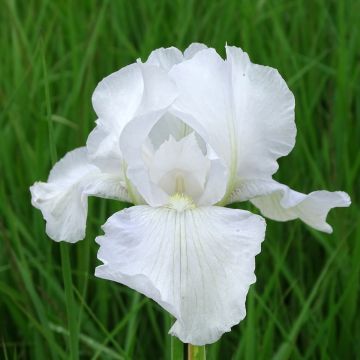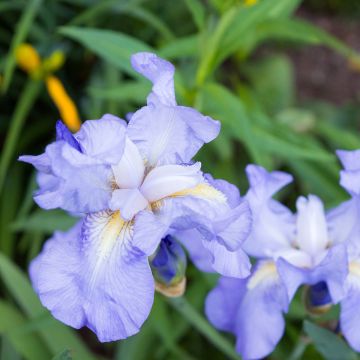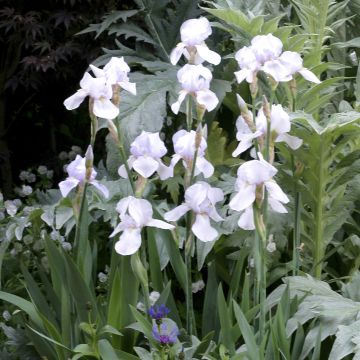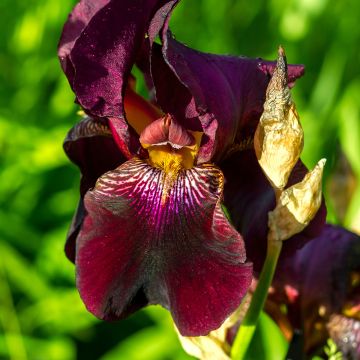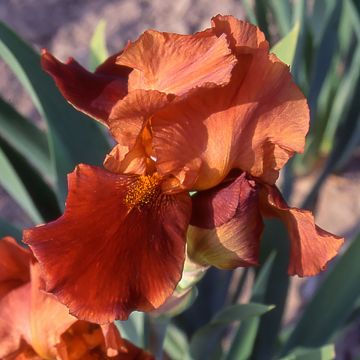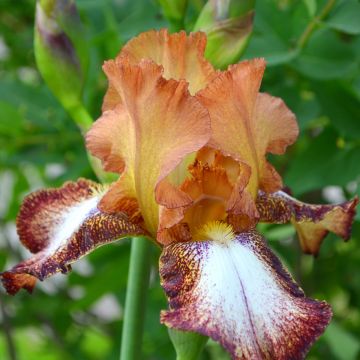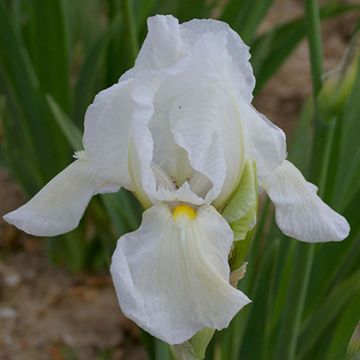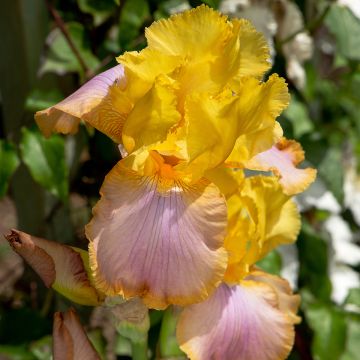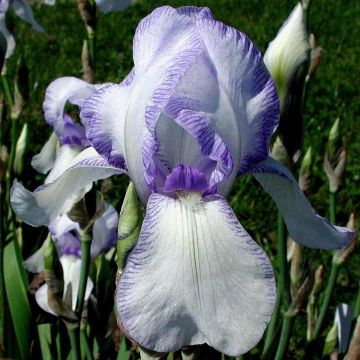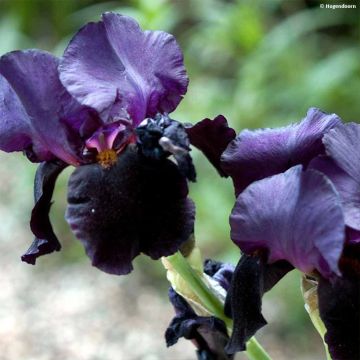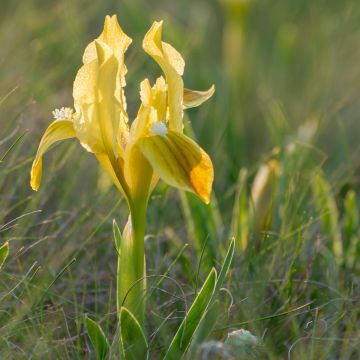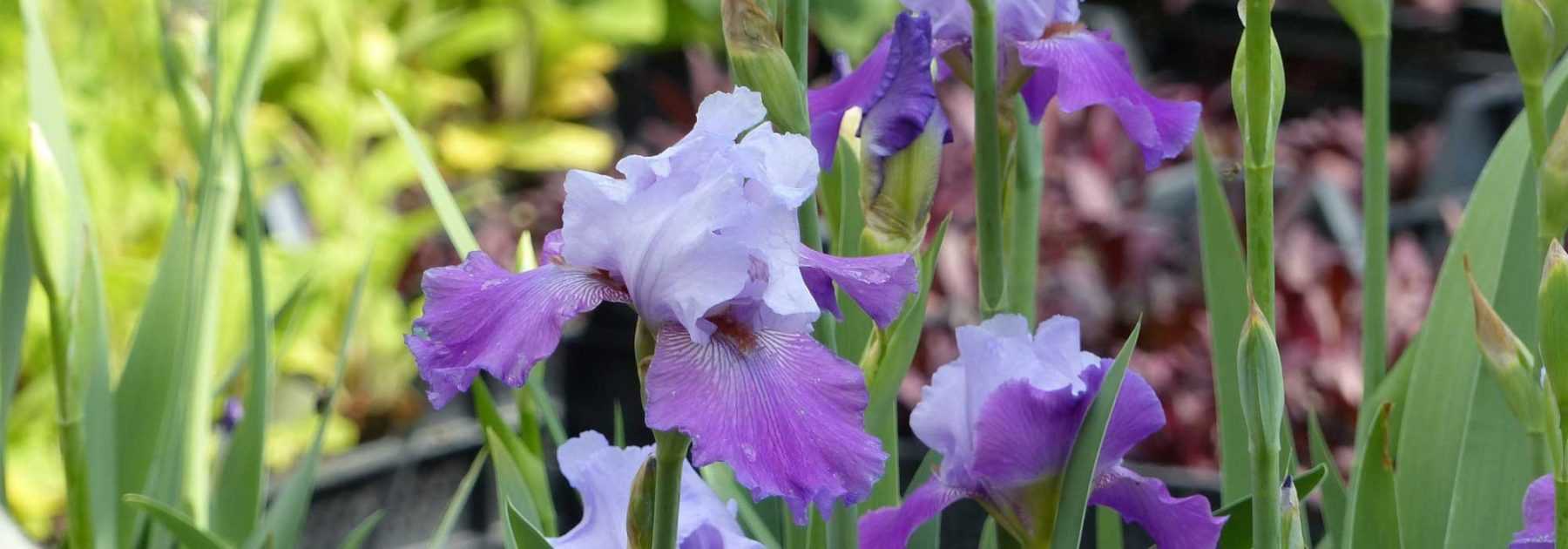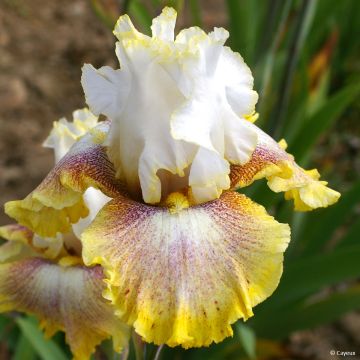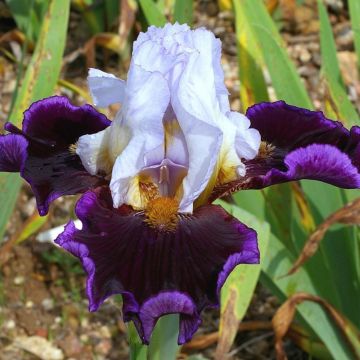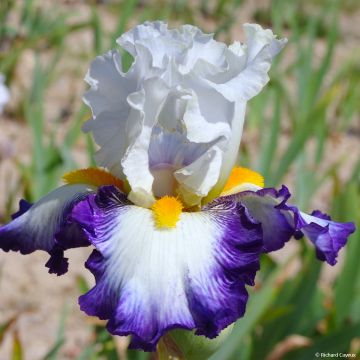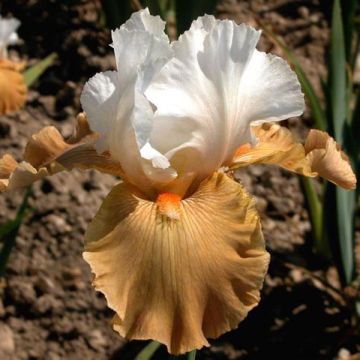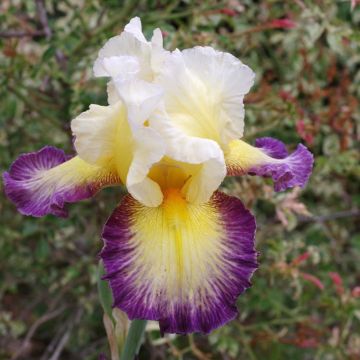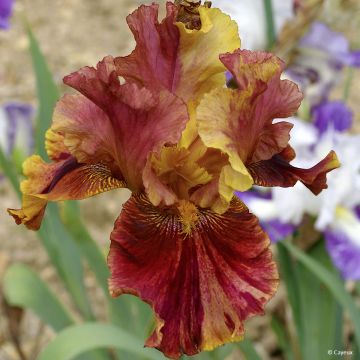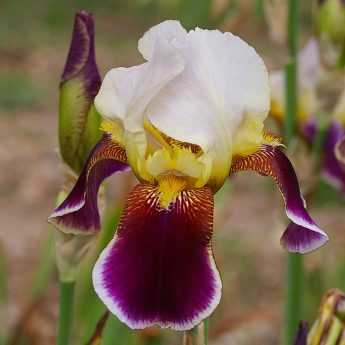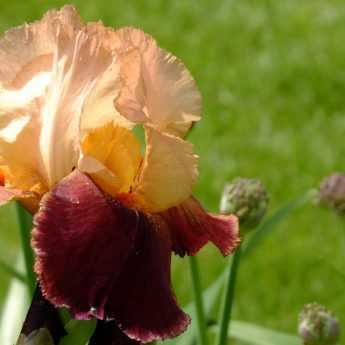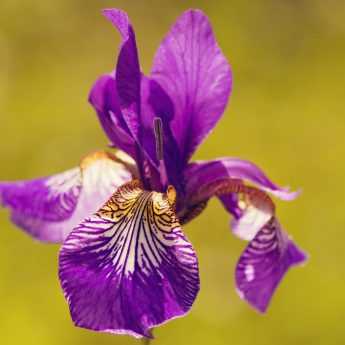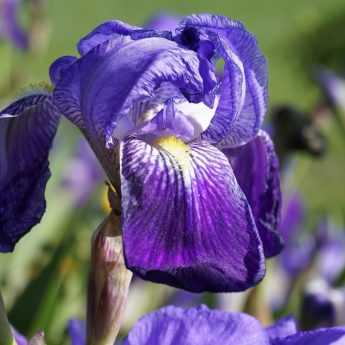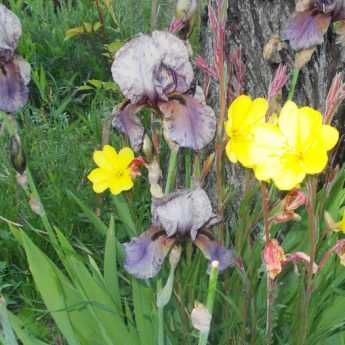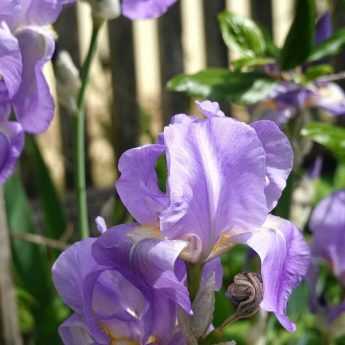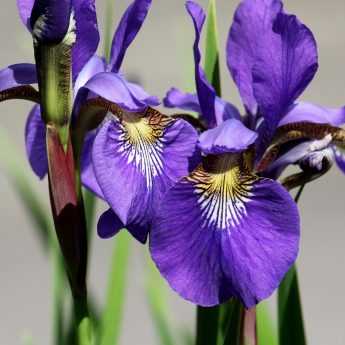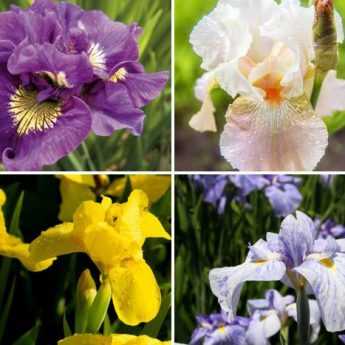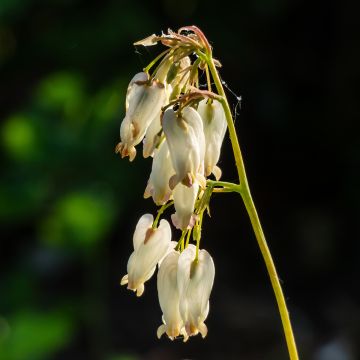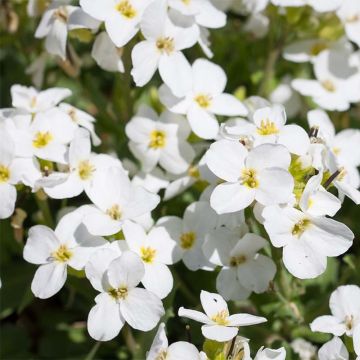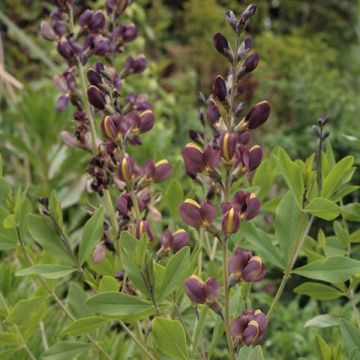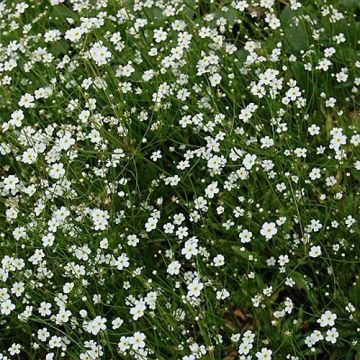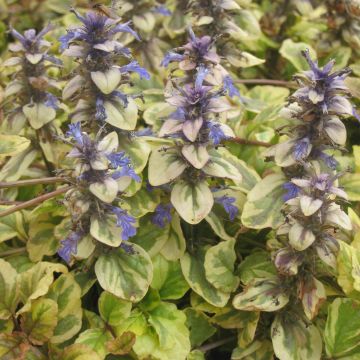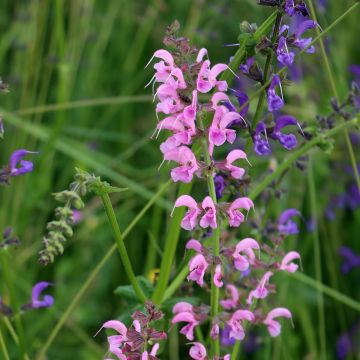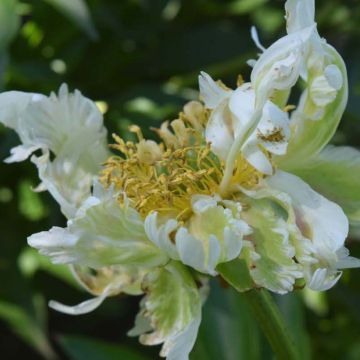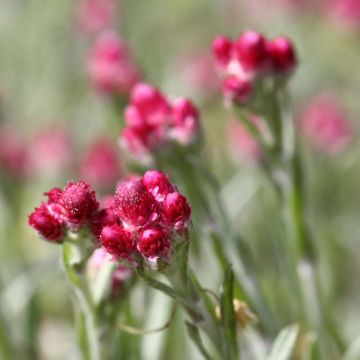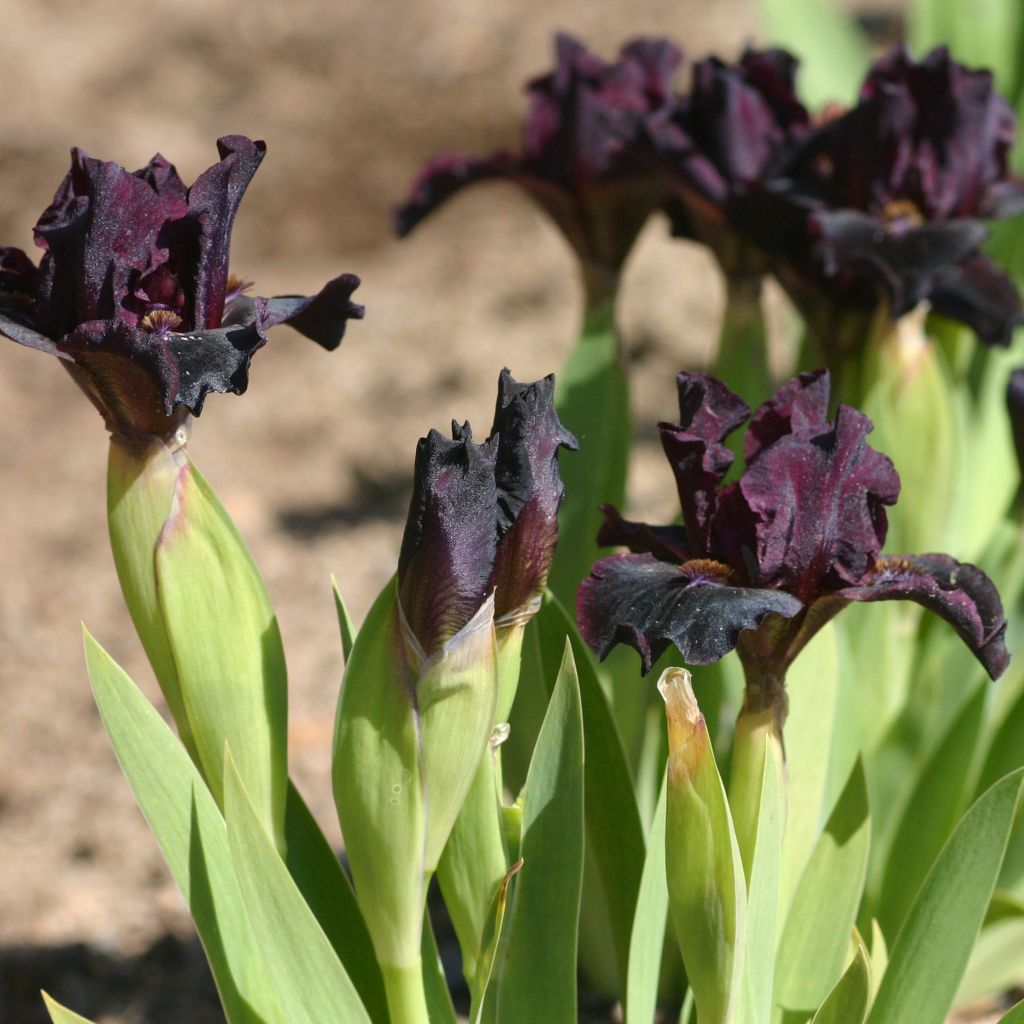

Iris germanica Devil Baby - Iris des Jardins Lilliput
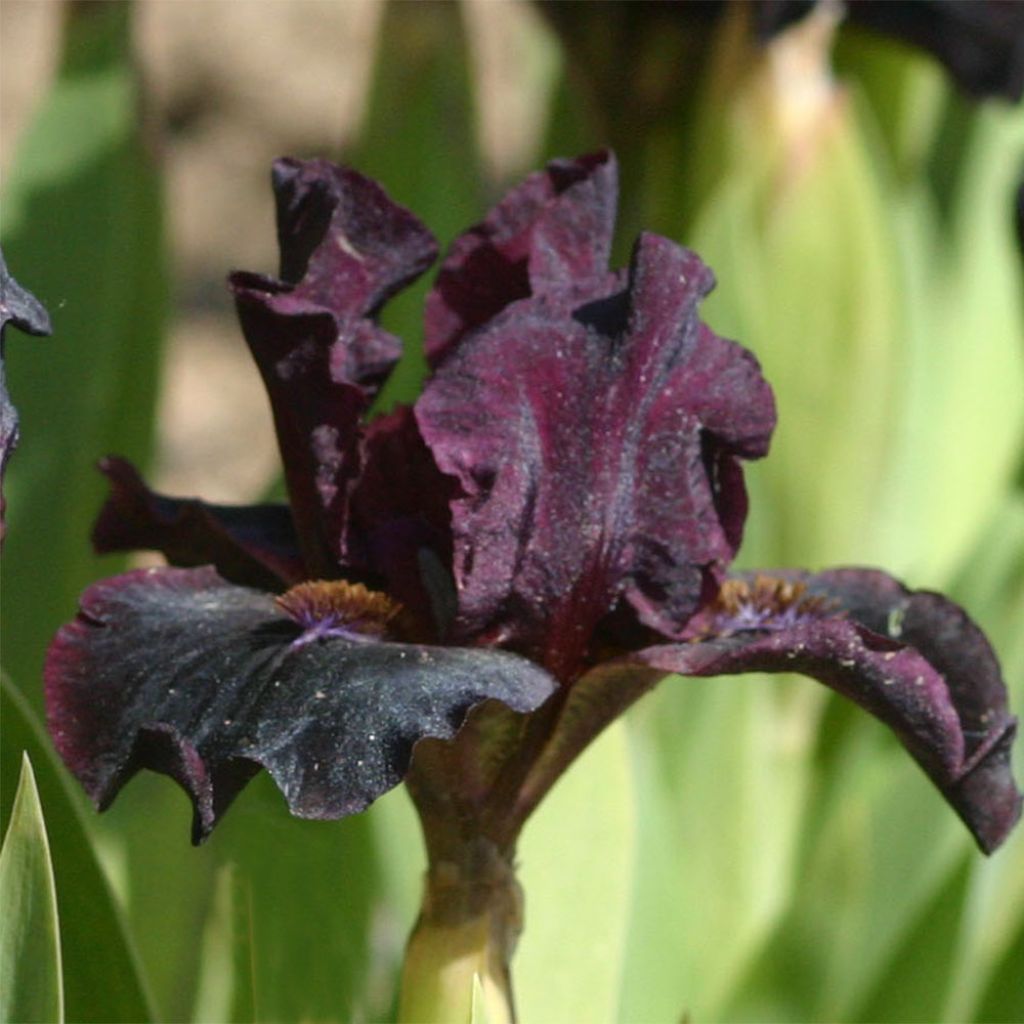

Iris germanica Devil Baby - Iris des Jardins Lilliput
Voir plus d'images
Masquer les images
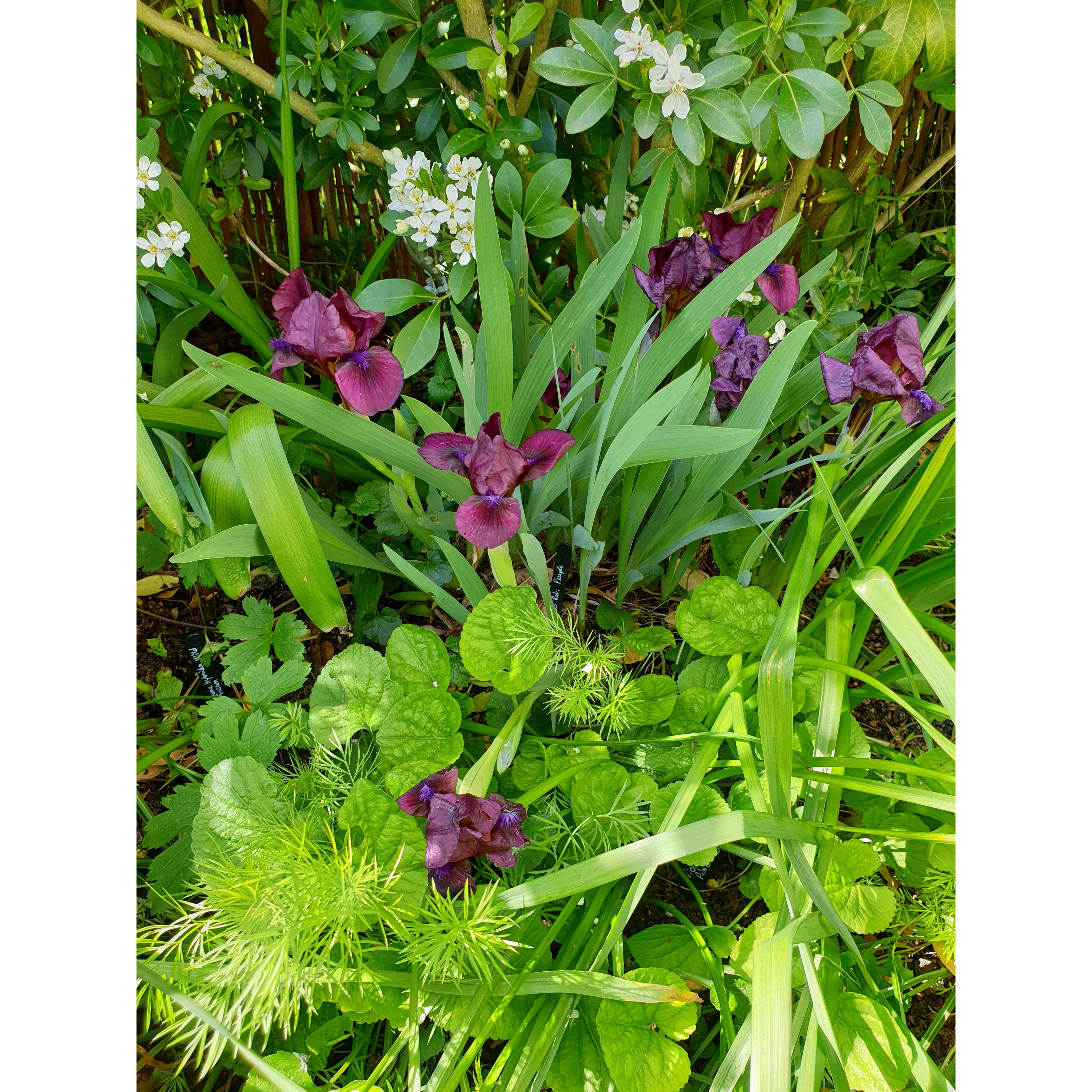
Stéphane C.

Iris nain Devil Baby 1 de Misstess
Stéphane C. • 67 FR
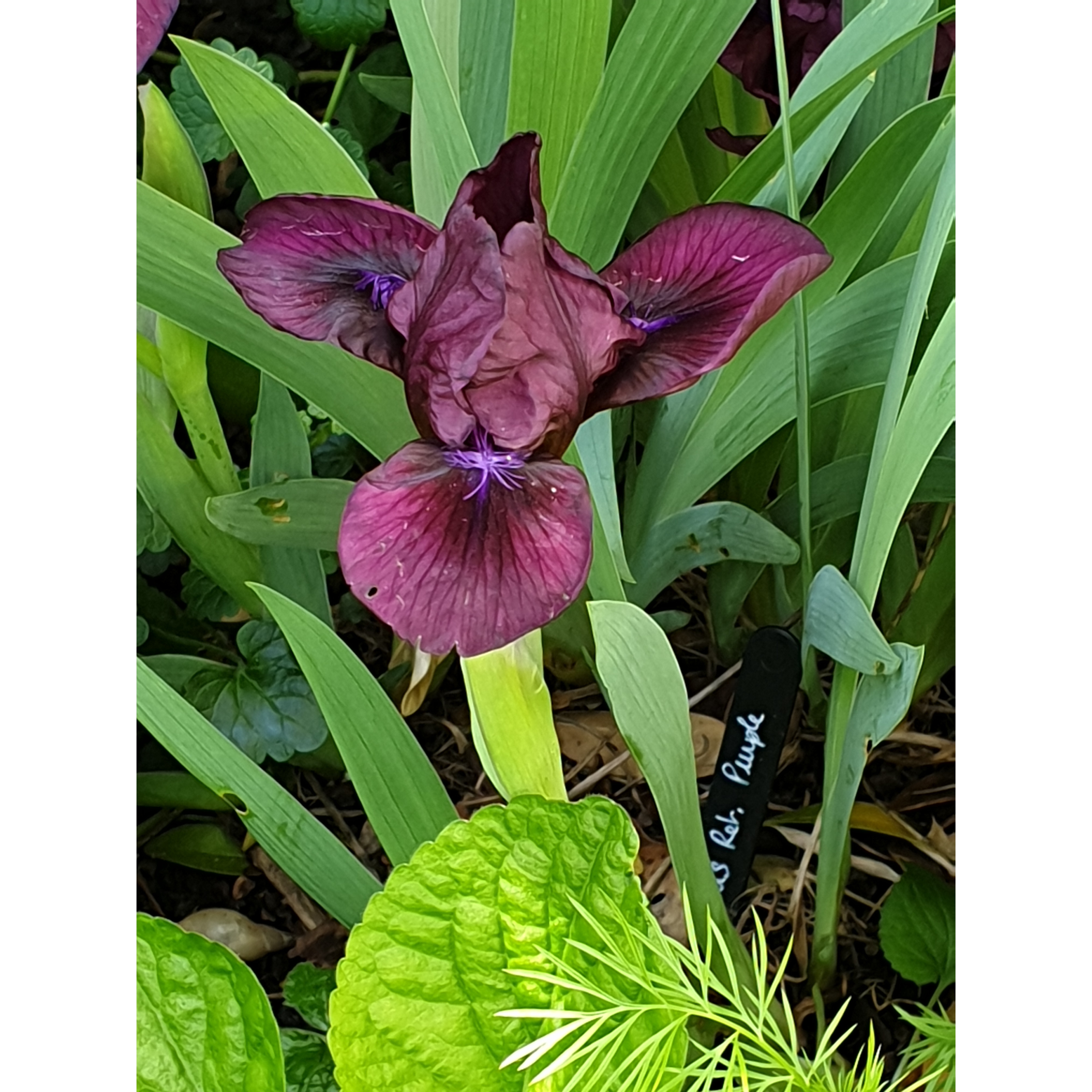
Stéphane C.

Iris nain Devil Baby 2 de Misstess
Stéphane C. • 67 FR
Iris germanica Devil Baby - Iris des Jardins Lilliput
Iris germanica Devil Baby
Iris des jardins, Grand Iris barbu, Iris d'Allemagne
Merci aux personnes (Anne Flore pour la préparation de commande et ? du service expédition) les bulbes reçus me semblent sains. Mis en terre, proche du rosier "Gabriel Oak", j'attends maintenant patiemment la reprise...
Thierry, 15/04/2023
Craquez pour d'autres variétés similaires en stock
Voir tout →Garantie de reprise de 12 mois sur cette plante
Plus d'infos
Nous garantissons la qualité de nos plantes durant un cycle végétatif complet.
Nous remplaçons à nos frais toute plante n'ayant pas repris dans des conditions climatiques et de plantation normales.
A partir de 7,90 € pour une livraison en relais et 6,90 € pour une livraison à domicile
Livraison express à domicile en 24-48h: 8,90 €.
A partir de 7,90 € pour une livraison en relais et 6,90 € pour une livraison à domicile
Livraison express à domicile en 24-48h: 8,90 €.

Cette plante est-elle adaptée à mon jardin ?
Je crée mon profil Plantfit →
Description
L'Iris germanica Devil Baby, également appelé Iris des Jardins Lilliput est une variété naine offrant en avril des fleurs bordeaux très sombre, presque noires, à la texture soyeuse. Des barbes bronze complètent cet ensemble au charme mystérieux. Cet iris forme rapidement de jolies touffes fleuries, parfaites pour créer un joli contraste avec les fleurs blanches ou roses, dans les rocailles et les bordures.
L'Iris 'Devil Baby' est une plante vivace rhizomateuse et caduque, ayant, à partir du printemps, un port en touffes dressées. Il appartient à la famille des Iridacées. C'est un des nombreux cultivars de taille modeste, qui ont fait leur apparition dans les années 50. A l'origine, la catégorie 'lilliput' désignait le croisement d'un Iris pumila et d'un grand iris. Ce terme désigne plus généralement la catégorie des Iris nains standard (SDB). 'Devil Baby' atteindra 20 cm de hauteur en fleur, avec de nombreux boutons, et la touffe s'étalera sans limite théorique avec le temps, les rhizomes du centre se dégarnissant au profit des rhizomes externes. Il possède un port en touffe dense. Le feuillage est constitué de longues feuilles en forme de sabre, vert glauque et très nervurées. En mars apparaissent des tiges florales qui donneront au mois d'avril des fleurs s'épanouissant depuis le sommet vers les ramifications plus basses. Le coloris de cette plante est, comme toujours chez les Iris des jardins, magnifié par la texture des pétales et des sépales, ici très soyeuse.
Obtenteur : Keppel 2005.
Pour accompagner les iris, on choisira les plantes à associer en fonction de leurs besoins (exposition, sol...), de leur végétation "respectueuse" des iris (plantes basses ou feuillage léger) et de leur complémentarité décorative (aspect, date de floraison). Par exemple les Gaura feront peu d'ombre aux iris et garderont au massif d'iris défleuri un aspect attractif tout l'été. Les Eschscholzia se contenteront comme l'iris d'un sol sec et pauvre. Les géraniums, les sauges et les Libertia accompagnent aussi très bien les iris. Talus et bords de restanques seront stabilisés par une plantation dense d'anciennes variétés diploïdes pouvant rester en place et demandant peu de soins. Si le but est plus décoratif et l'accès pour des soins possible, on peut choisir des variétés plus modernes, par exemple des intermédiaires qui risqueront moins que les grands de se voir renversés.
Bordure d'allée: toute la gamme peut être utilisée, depuis les précoces nains de moins de 40 cm, jusqu'aux grands iris de plus de 75 cm fleurissant en mai, en passant par les intermédiaires (en taille et en précocité) et les iris dit de bordure, de taille moyenne mais fleurissant avec les grands. Très exposés au vent, les grands iris risquent d'être couchés s'ils ne sont pas tuteurés.
Bordure de massif: le domaine des iris... de bordure mais aussi des nains, selon les circonstances.
Mixed-border : toute la gamme de taille peut être utilisée, à choisir en fonction de la place (premier plan, fond) et de la taille des plantes environnantes.
Iris germanica Devil Baby - Iris des Jardins Lilliput en images...
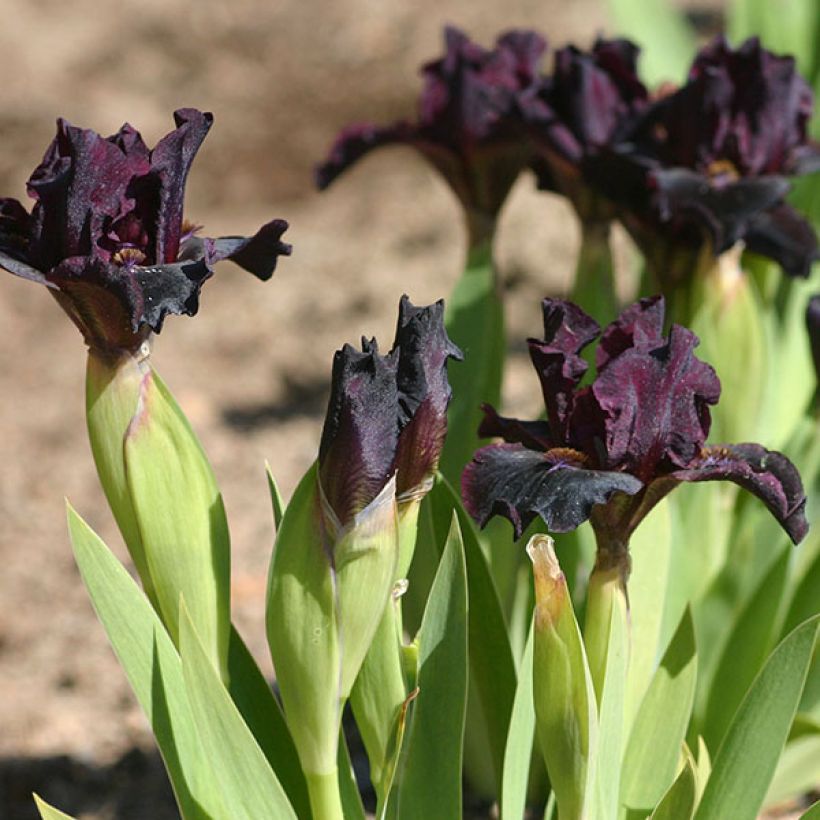

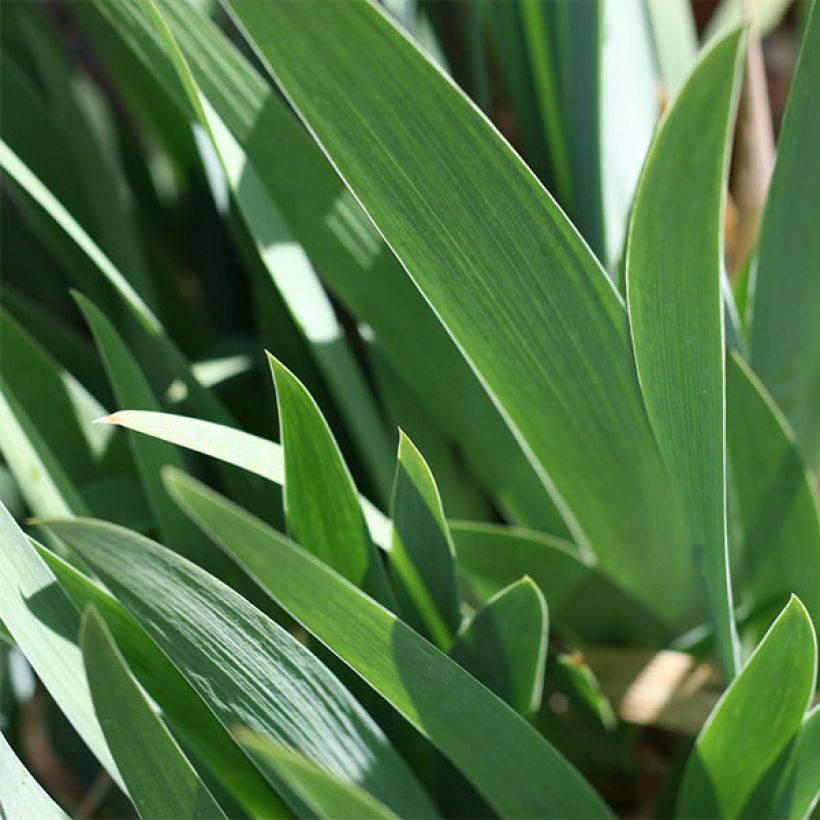

Floraison
Feuillage
Port
Botanique
Iris
germanica
Devil Baby
Iridaceae
Iris des jardins, Grand Iris barbu, Iris d'Allemagne
Horticole
Autres Iris des jardins - Iris germanica
Plantations et soins
Disposez-vous d'un emplacement ensoleillé, chaud et plutôt sec l'été ?
C'est l'emplacement idéal pour la plantation des iris! A l'ombre, ils végètent mais ne fleurissent pas. Ils se cultivent en France en toutes régions. Rustiques, ils n'ont pas besoin de protection hivernale. Un sol bien drainé convient parfaitement, même s'il est plutôt sec et calcaire. Un sol trop humide favorise la pourriture du rhizome. Plantez de juillet à septembre. Les rhizomes ont ainsi le temps de grossir suffisamment avant arrachage, puis de faire leurs nouvelles racines avant l'hiver. Ils doivent être plantés dès l'achat, pour un meilleur résultat. Prévoir de diviser les iris tous les 4 ans environ pour leur donner un sol neuf. Ils ont une forte croissance et nécessitent de l'espace pour se développer et bien fleurir. Ils sont plantés avec un espacement adapté à la taille et à la vigueur de la variété : environ 34-50 cm pour les grands (5 à 10 pieds au mètre carré). Dans une plantation monochrome les rhizomes sont plantés en quinconce. Pour faire un mélange de couleurs, il est conseillé pour l'esthétique d'ensemble du massif d'iris de les planter par groupes de plusieurs pieds d'une même variété. On tiendra toujours compte du sens de croissance des rhizomes en les disposant en étoile, bourgeons et feuilles tournés vers l'extérieur, et en les espaçant bien des autres variétés afin qu'ils aient la place de se développer.
Plantation
Creuser un trou assez large et profond. Y faire un tas de terre conique sur lequel on pose le rhizome et les racines étalées. Recouvrir les racines. Il est important que le rhizome soit laissé affleurant la surface du sol. On ne doit pas le planter dans une cuvette (risque de pourriture), aussi, prévoir que le sol va se tasser et l'iris s'enfoncer. En terrain argileux ou humide, le rhizome sera même laissé surélevé sur une légère butte de quelques centimètres. Pour faire adhérer la terre aux racines, le sol est légèrement tassé et abondamment arrosé dès la plantation. Arroser si besoin 2-3 fois jusqu'à la reprise.
Entretien:
Maintenir le sol sans herbes, par un binage superficiel en prenant soin de ne pas blesser les rhizomes ou les racines. L'herbe fait de l'ombre aux Iris, retient l'humidité (pourriture) et les limaces. De même, couper les feuilles sèches. Si elles sont malades (taches à bords rougeâtre de l'hétérosporiose), les brûler. Couper les fleurs fanées.
Quand planter ?
Pour quel endroit ?
Soins
Nos conseils plantation et soins
L'entretien des vivaces : le "Chelsea Chop" ou l'art de pincer
notre spécialiste
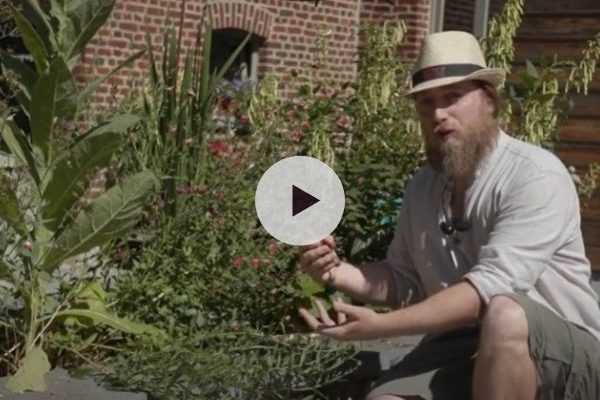
Vivaces à floraison printanière
Vous n'avez pas trouvé votre bonheur ?
La rusticité est la température hivernale la plus basse qu'une plante puisse endurer sans subir de dommages sérieux, voire mourir. Cette rusticité est toutefois affectée par l'emplacement (zone abritée, comme un patio), les protections (voile d'hivernage) et le type de terre (la rusticité est améliorée par un sol bien drainé).

Conditions Générales d'Utilisation du Service Photos Client
Dans le but de favoriser l’interaction et le partage d'expériences entre jardiniers, Promesse de fleurs propose différents services permettant le dépôt de contenus sur son Site – via notamment le module « Partage de photos».
L’Utilisateur s’interdit de:
- Publier tout contenu illégal, préjudiciable, injurieux, raciste, incitant à la haine, révisionniste, contraire aux bonnes mœurs, portant atteinte à la vie privée ou portant atteinte aux droits privatifs de tiers, notamment le droit à l’image des personnes et des biens, le droit de propriété intellectuelle ou le droit au respect de la vie privée
- Déposer des contenus pour le compte d’un tiers
- Usurper l’identité d’un tiers et/ou publier toute information personnelle d’un tiers
D'une manière générale, l’Utilisateur s’engage à s’abstenir de tout comportement contraire à l’éthique
L’ensemble des Contenus (notamment textes, commentaires, fichiers, images, photos, vidéos, œuvres, etc… ), éventuellement soumis à des droits de propriété, propriété intellectuelle, droit à l’image ou autre droit privatif restent la propriété de l’Utilisateur, sous réserve des droits limités accordés par la licence définie ci-dessous à Promesse de fleurs. Les Utilisateurs sont libres de publier ou non de tels Contenus sur le Site via notamment le service « Partage de photos » et acceptent que ces Contenus deviennent publics et librement accessibles notamment sur Internet.
Ils reconnaissent, s’engagent et garantissent disposer de l’ensemble des droits et autorisations nécessaires pour une telle publication sur le Site, notamment au titre de la législation en vigueur et des droits au respect de la vie privée, de propriété, de la propriété intellectuelle, à l’image, des contrats ou de toute autre nature. Par une telle publication sur le Site, les Utilisateurs ont conscience d'engager leur responsabilité en tant qu'éditeur du Contenu au sens de la loi, et accordent sur le dit Contenu, pour toute la durée de publication, à Promesse de fleurs, une licence non exclusive, gratuite, mondiale, incluant les droits de reproduction, de représentation, de chargement, d’affichage, d’exécution, de transmission, de stockage.
Les Utilisateurs autorisent également que leur nom puisse être associé au Contenu et acceptent que cette association ne soit pas toujours faite.
Par leur publication, les Utilisateurs autorisent qu'un Contenu puisse devenir automatiquement accessible sur internet, notamment sur d'autres sites et/ou blogs et/ou pages web du site Promesse de fleurs incluant notamment les pages des réseaux sociaux et le catalogue de Promesse de fleurs.
Les utilisateurs peuvent librement obtenir le retait des contenus confiés, en contactant le service client via le formulaire de contact

































